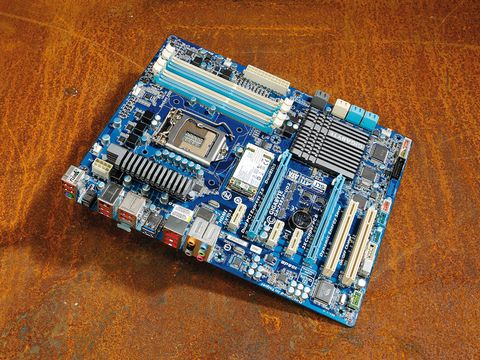TechRadar Verdict
Pros
- +
Onboard SSD
- +
Quality board design
Cons
- -
Single output for graphics
- -
Very niche product
Why you can trust TechRadar
Gigabyte has wasted no time in producing boards using the new Z68 chipset, in fact you could say they have gone slightly overboard with the excitement of it all, as they have no less that 20 motherboards currently in their line-up.
That said it has almost entirely pulled out of the P67 platform, seeing the Z68 as its demise. The plan is to only produce one P67 mobo going forward.
Sitting amongst the awkwardly named Z68 line-up though are five boards (GA-Z68XP-UD3, GA-Z68XP-D3, GA-Z68AP-D3, GA-Z68P-DS3 GAZ68XP-UD3-iSSD) which all have one thing in common; they are the first desktop boards to be fitted with mSATA connections on the PCB.
This allows the mounting of a small form factor SSD to work alongside Intel's Smart Response Technology (SRT) and of the five, only the GA-Z68XP-UD3-iSSD comes with a drive already in place.
The drive bundled with the board comes in the shape of one of Intel's new 20GB MLC 311 series SSDs.
Smarten up
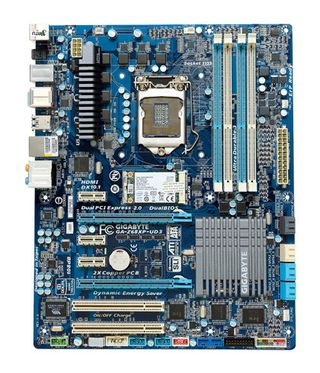
Intel's Smart Response Technology (SRT) enables you to use a small SSD together with a mechanical drive in a dynamic RAID array to, purportedly, improve system performance. The SSD caches the most commonly accessed files giving these files a faster fetch time. This drive is positioned between the CPU socket and the first x16 PCI-e graphics slot.
Gigabyte's take on this tech with this mobo is interesting as it supplies the SSD already installed. There are cheaper mSATA-ready alternatives offering the option to add in a teeny SSD as an SRT drive later on.
Thanks to the way Gigabyte creates its SRT setup it doesn't need you to wipe your drives and start afresh, unlike most of the competitors.
The board supports two x16 PCI-e slots but as they are just running off the chipset with no third-party controller they wont operate at full speed in dual-GPU configuration. With a single card it will run at full speed but chuck in a second and both slots drop to x8/x8.
Although the board comes with a multitude of memory options in the BIOS for the integrated graphics, when it comes to outputting the signal it's very limited. In comparison with the other Z68 boards (and any other H67 mobo) the one HDMI port looks rather miserly.
Another deficiency that stands out is the single heatsink on the power components, especially for a board aimed somewhat at the enthusiast. This is down to the PCB design which uses 2oz of copper, which together with the high-end power components dramatically cuts the amount of heat generated.
Sadly that didn't help in the overclocking stakes as we managed a relatively lowly 4.5GHz from our 2600K.
Tech Labs

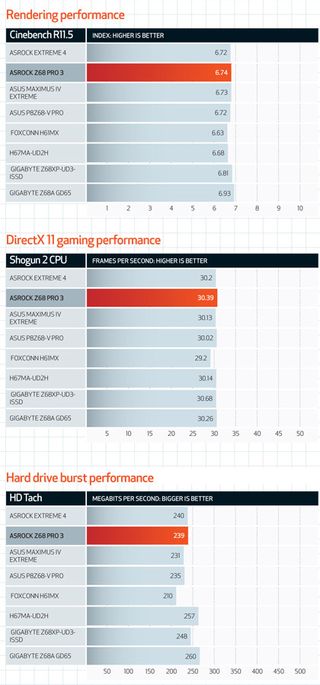
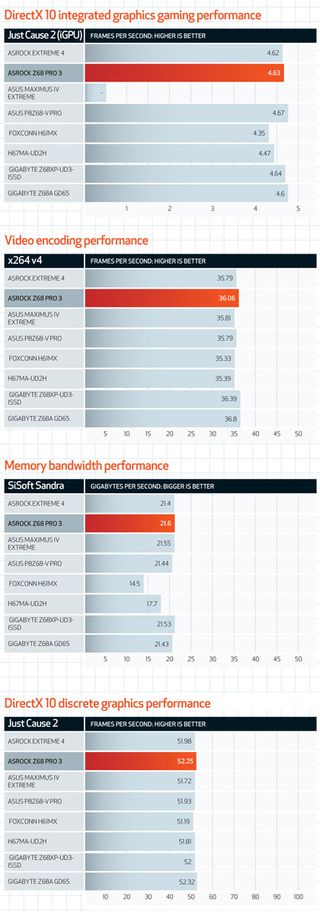
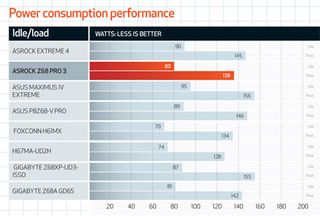

This isn't a board for everyone, but if SRT appeals to you, and you can't afford a serious SSD, the Z68XP-UD3-iSSD is an interesting option.
Follow TechRadar Reviews on Twitter: http://twitter.com/techradarreview
